Kitsune Udon is a Japanese noodle soup in dashi broth topped with seasoned fried tofu pouches, pink-swirl narutomaki fish cake, and sliced scallions. This comforting udon soup is one of the most popular and classic Japanese noodle recipes of all time.
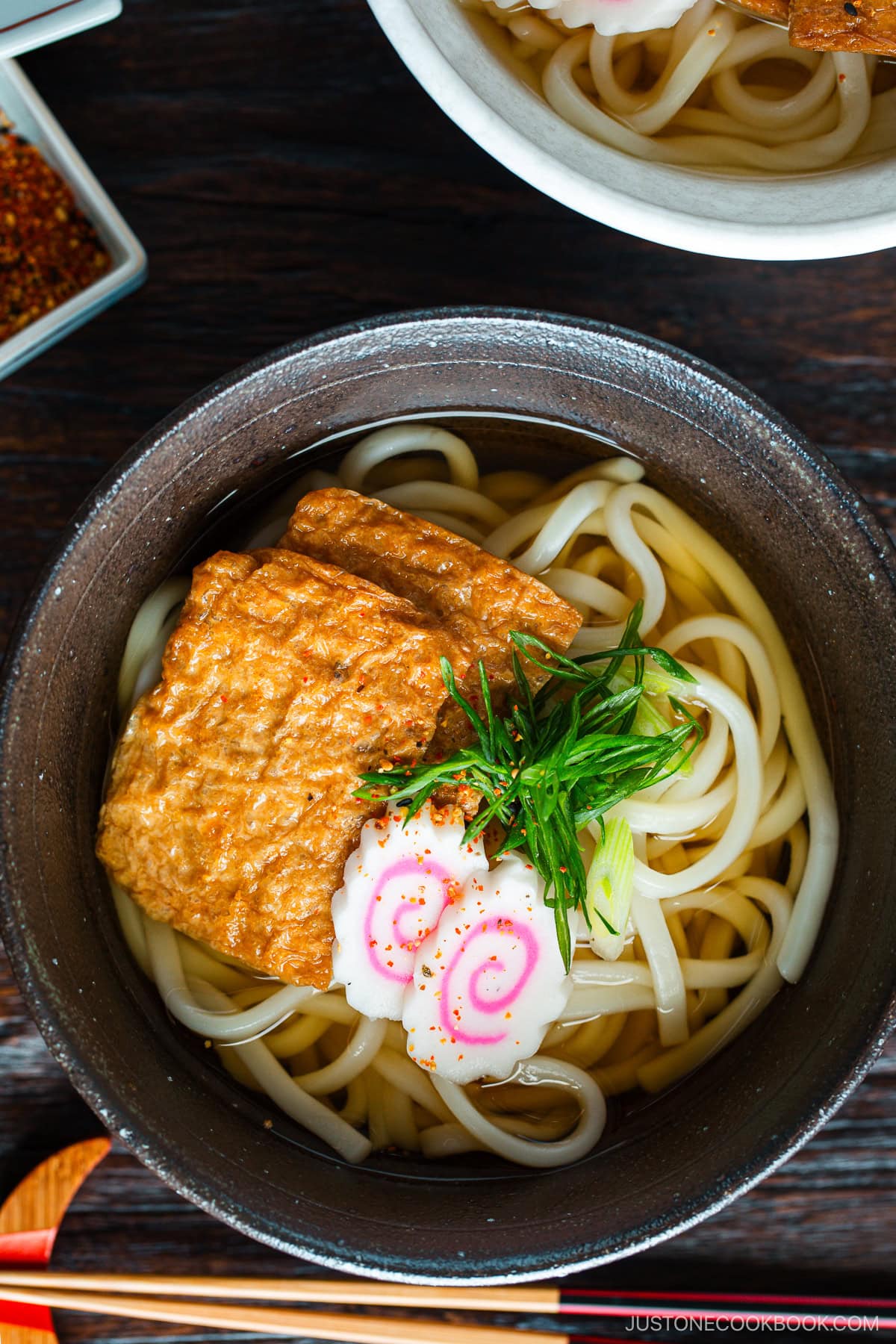
If you’re looking for the ultimate Japanese comfort food that can lift up your mood any time of year, I can’t recommend enough cooking this bowl of Kitsune Udon (Noodle Soup) (きつねうどん). It’s a humble dish, yet so comforting and satisfying.
The rich broth, chewy noodles, and fried tofu pouches—everything comes together so nicely that you just want to hold your face above the bowl and let the aroma envelop you. It’s so simple and quick to make this kitsune udon recipe, so there is no excuse not to try it!
Table of Contents
What is Kitsune Udon?
Kitsune udon is a traditional Japanese noodle soup of chewy and thick udon noodles, light and flavorful dashi broth, and deep-fried tofu pouches (aburaage) seasoned with soy sauce, mirin, and sugar. We typically served it hot, but in the sweltering summer months, we enjoy it chilled with a few spoonfuls of dashi-based sauce poured on top.
Kitsune means “fox” in Japanese. There are a few theories about why we call this dish “fox udon.” One is that aburaage appears as a fox’s favorite food in Japanese folktales, so people call this dish kitsune udon from the tofu pouches on top. Another theory is that aburaage is called kitsune because it’s the same color as a fox. This makes the most sense to me since Japanese recipes often say to “cook to a fox color” to describe a golden brown color.
3 Key Ingredients for Kitsune Udon
To make the perfect bowl of kitsune udon, you need high-quality ingredients, starting with dashi (Japanese soup stock), udon noodles, and aburaage.
1. Dashi Stock
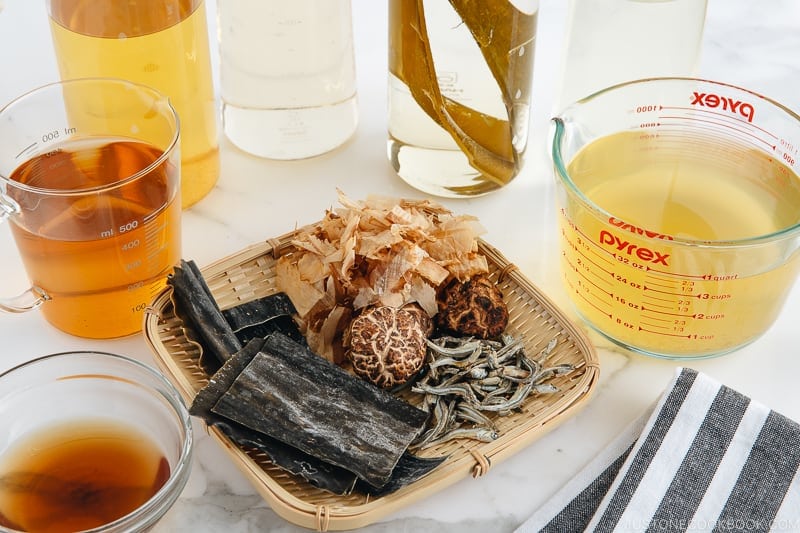
I can’t stress enough the importance of good-quality dashi. It gives the soup that rich, umami flavor that you’ll want to sip to the last drop. In the past, I’ve shared three ways to make dashi with dashi powder, a dashi packet, or from scratch. For this recipe, I only recommend using homemade dashi or a dashi packet. Dashi powder doesn’t provide enough depth for a flavorful broth.
Please don’t be intimidated by making dashi from scratch. Spend the extra 20 minutes to make a super tasty broth—trust me, it’s worth your time and it’s easy to make! I recommend Awase Dashi (kombu + katsuobushi/bonito flakes) or Katsuo Dashi (just bonito flakes) for udon noodle soup broth. For vegetarian/vegan dashi, use Kombu Dashi.
2. Udon Noodles
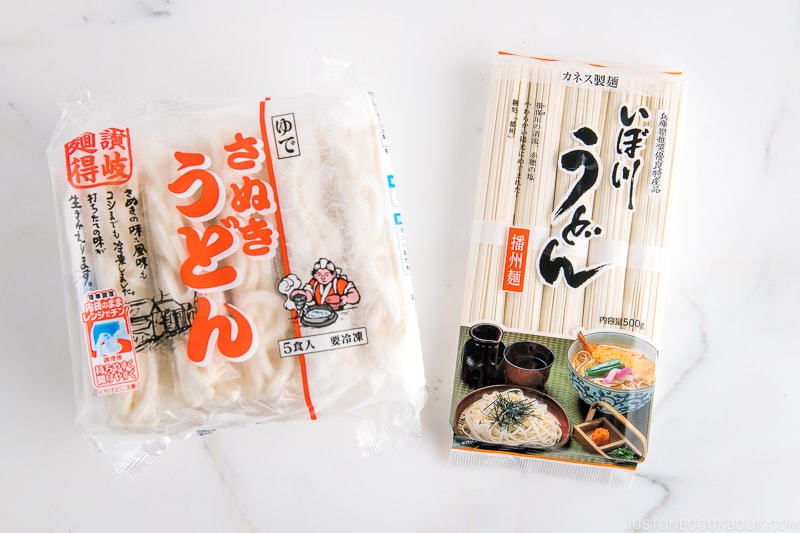
Udon noodles are now popular outside of Japan, so you can easily purchase them in regular US grocery stores. However, many products are not very good. The noodles don’t have the right texture and tend to break into pieces.
If your local Japanese or Asian grocery stores carry frozen Sanuki udon noodles in the freezer section or parboiled Sanuki udon noodles, try one of those options. They are chewier and not doughy/floury, and won’t break as easily.
3. Aburaage: Packaged vs. Homemade

Living outside of Japan, I know that raw ingredients can be harder to find than prepackaged foods. Inari age (seasoned deep-fried tofu pouch) is made of aburaage (deep-fried tofu pouch). When you want to make homemade Inari age, you need aburaage, but it’s really difficult to find unless you have a well-stocked Japanese grocery store.
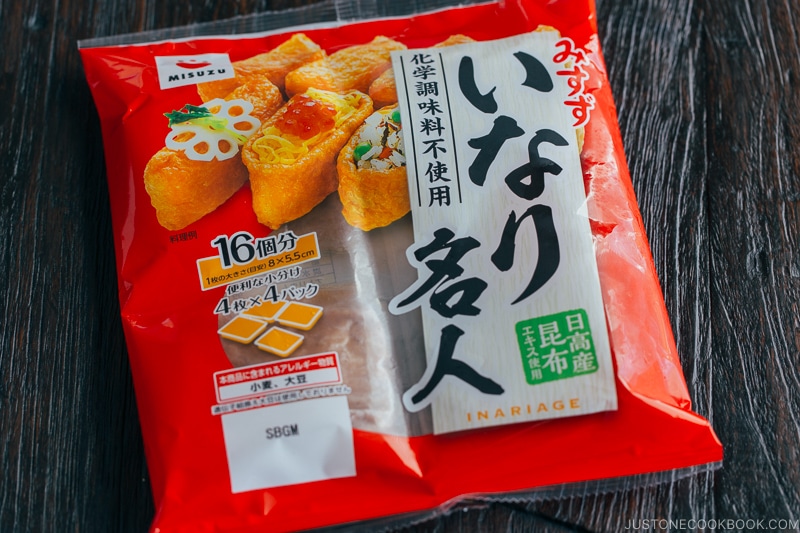
Packaged Inari age is widely available even in Asian grocery stores as they are used for making the popular Inari Sushi. If you are lucky enough to find aburaage, try making my Homemade Inari Age! It’s preservative-free and really delicious!
Ingredients for Kitsune Udon
Here’s a complete list of ingredients you’ll need:
- kombu (dried kelp), water, and katsuobushi (dried bonito flakes) – for the dashi
- dashi, mirin, sugar, salt, and usukuchi (light-colored) soy sauce – for the soup broth; you can substitute regular soy sauce
- Inari age (seasoned fried tofu pouch) – canned or refrigerated; or make it homemade
- green onion/scallion
- narutomaki (fish cakes) – optional
- udon noodles
- shichimi togarashi (Japanese seven spice) – optional; sprinkle for a spicy kick
How to Make Kitsune Udon
Here’s a quick overview; see my recipe below for full instructions.
- Make the homemade dashi. Heat kombu and cold water in a saucepan. Before it boils, remove the kombu. Add the katsuobushi, simmer briefly, and turn off the heat. Let the bonito flakes sink, then strain the stock.
- Cook the udon broth. Add the broth ingredients to a saucepan and bring to a boil over medium heat. Then, cover and keep on a low simmer.
- Prepare the toppings. Squeeze the liquid from the Inari age. Thinly slice the green onion and narutomaki.
- Boil the udon noodles in a large pot of water per package directions and drain well.
- Assemble the kitsune udon. Divide the noodles into individual bowls. Pour in the broth and top with Inari age, narutomaki, and sliced scallions.
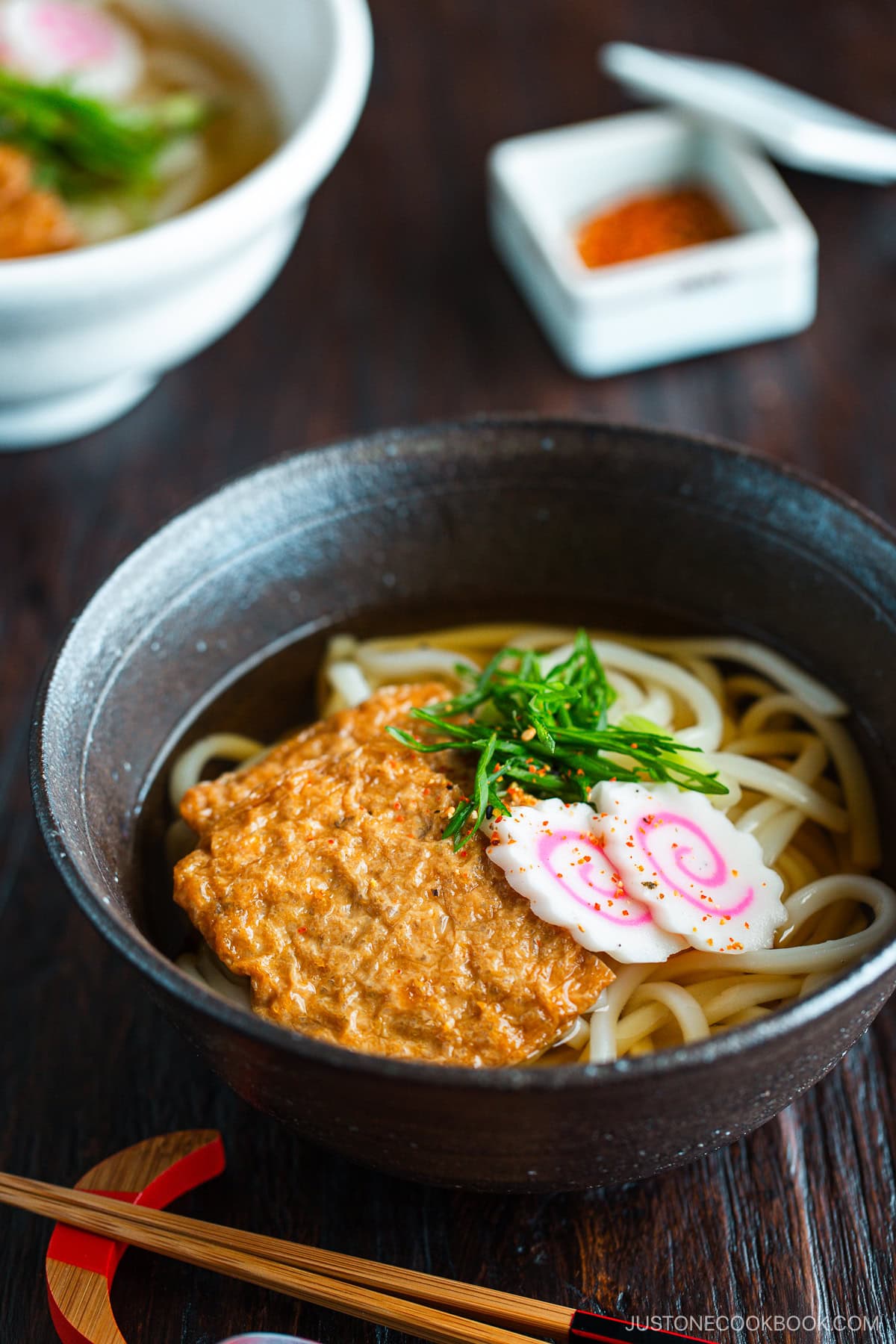
Vegetarian/Vegan-Friendly Kitsune Udon
There is a misconception that dashi is not vegetarian/vegan, but that’s not completely true. While standard dashi is made with bonito flakes and kombu, we also use which is 100% vegetarian/vegan Kombu Dashi in our daily Japanese cooking.
Use kombu dashi to make vegetarian/vegan kitsune udon and skip those spiral fish cakes as a garnish. And as simple as that, you have a vegetarian/vegan udon!
Did you watch Netflix “Midnight Diner: Tokyo Stories” Season 2?
You can find this Kitsune Udon dish featured on the popular Netflix® – Midnight Diner: Tokyo Stories (Season 2, Episode 7).

In the show, the master prepares a bowl of Kitsune Udon with a large homemade Inari age. It’s such a humble dish, yet so comforting and satisfying.
Other Hot Udon Noodle Soup Recipes
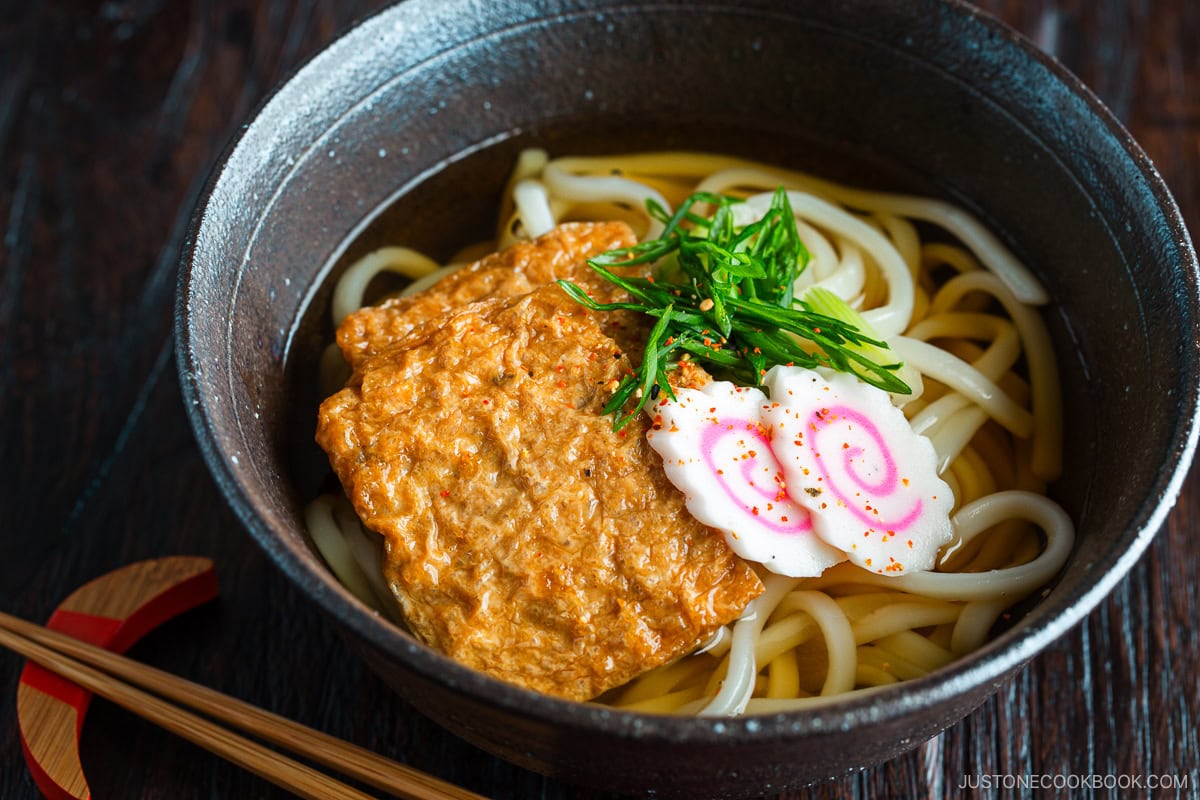
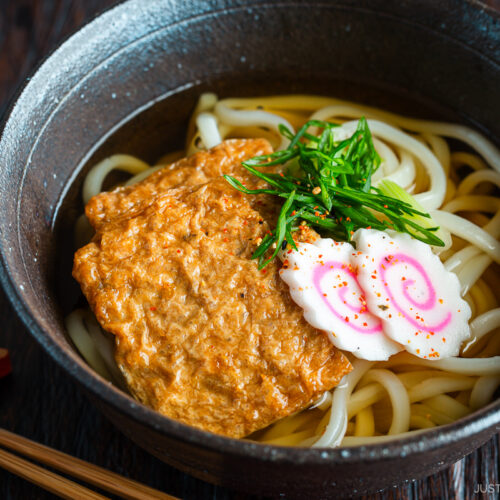
Kitsune Udon
Video
Ingredients
For the Homemade Dashi
- 1 piece kombu (dried kelp) (2 x 5 inches, 5 x 12 cm per piece)
- 2½ cups water
- 1½ cups katsuobushi (dried bonito flakes) (packed; ½ oz; skip for vegetarian/vegan)
For the Soup Broth
- 2½ cups dashi (Japanese soup stock) (use standard Awase Dashi, dashi packet or powder, or Vegan Dashi); dashi recipe instructions included below)
- 1 Tbsp mirin
- 1 tsp sugar
- 1 Tbsp usukuchi (light-colored) soy sauce (can substitute regular soy sauce)
- ½ tsp Diamond Crystal kosher salt
For the Kitsune Udon
- 4 Inari age (seasoned fried tofu pouch) (canned or refrigerated; or make my homemade Inari Age)
- 1 green onion/scallion
- 4 slices narutomaki (fish cakes) (optional; skip for vegetarian/vegan)
- 2 servings udon noodles (1.1 lb, 500 g frozen or parboiled udon noodles; 6.3 oz, 180 g dry udon noodles)
- shichimi togarashi (Japanese seven spice) (optional; or a spicy kick)
Instructions
Before You Start…
- Gather all the ingredients. It‘s really important to have good flavorful dashi for this recipe. Although you can take a shortcut by using dashi powder or a dashi packet, I encourage you to make dashi from scratch because the broth tastes so much better! It only takes less than 30 minutes to make. See my instructions below for Awase Dashi and Kombu Dashi (vegetarian/vegan).
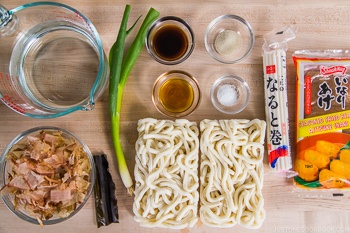
To Make the Homemade Dashi
- Put 1 piece kombu (dried kelp) and 2½ cups water in a measuring cup for at least 30 minutes. If you have time, soak for 3 hours or up to half a day. The kombu’s flavor comes out naturally from soaking it in water. If you don’t have time, skip soaking.
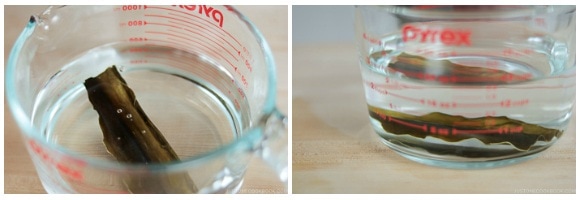
- Transfer the kombu and water to a saucepan. Slowly bring to a boil over medium-low heat.
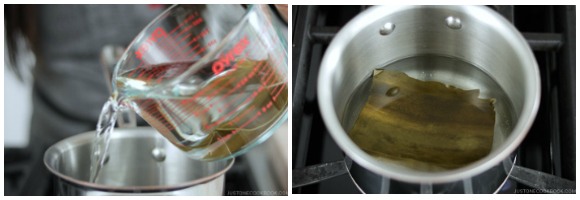
- Just before the liquid boils (you will see bubbles around the edges of the pan), remove the kombu. If you leave the kombu inside, the dashi will become slimy and bitter. Now, this broth is vegetarian/vegan Kombu Dashi and it‘s ready to use. For non-vegetarian/vegan, add 1½ cups katsuobushi (dried bonito flakes) and bring it to a boil again.
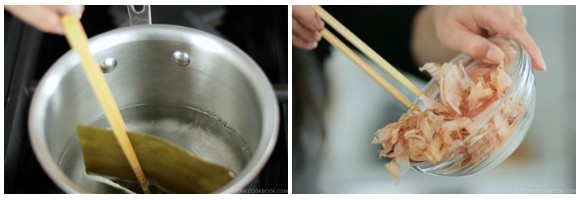
- Once the dashi is boiling, reduce the heat, simmer for just 15 seconds, and turn off the heat. Let the katsuobushi sink to the bottom, about 10–15 minutes. Strain the dashi through a fine-mesh sieve set over a saucepan. Now you have homemade Awase Dashi.
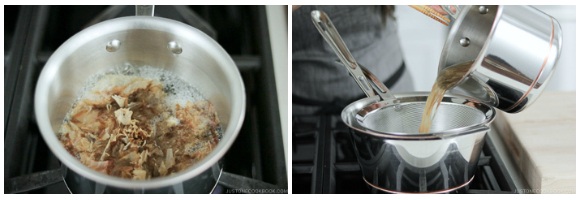
To Make the Soup Broth
- In a saucepan, add 2½ cups dashi (Japanese soup stock), 1 Tbsp mirin, 1 tsp sugar, 1 Tbsp usukuchi (light-colored) soy sauce, and ½ tsp Diamond Crystal kosher salt and bring it to a boil. Once boiling, turn off the heat or cover and keep on a low simmer. Tip: We use the light-colored usukichi type of soy sauce here so the color of the soup broth doesn‘t become too dark.
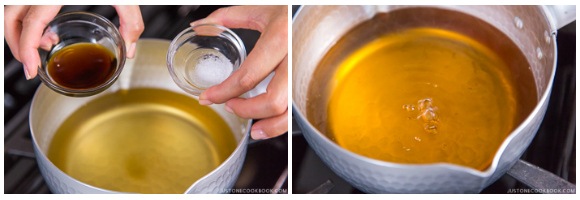
To Prepare the Toppings
- Squeeze the excess liquid from 4 Inari age (seasoned fried tofu pouch) (or you can keep the liquid as is, if you prefer). Cut 1 green onion/scallion into thin slices. Cut 4 slices narutomaki (fish cakes) into ⅛-inch (3-mm) slices.

To Cook the Udon Noodles
- Bring a large pot of water to a boil for 2 servings udon noodles. My favorite udon is frozen Sanuki udon. Reheat the frozen udon noodles in boiling water for 1 minute (no need to defrost). If you use dry noodles, follow the package instructions.
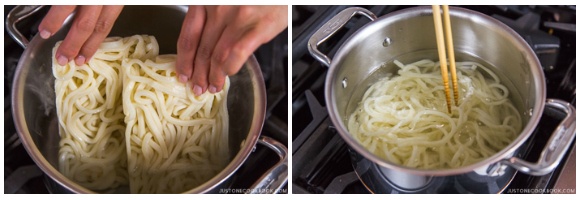
- Pick up the noodles in a strainer or drain the hot water. Make sure to shake off the excess water (which will end up diluting your soup).
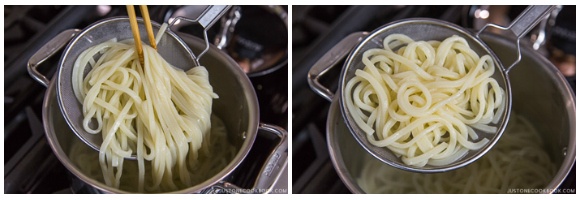
To Serve
- Divide the drained udon noodles into individual serving bowls. Pour the hot broth over the noodles to cover. Top with the Inari age, narutomaki, and green onions. Sprinkle shichimi togarashi (Japanese seven spice) on top (optional).
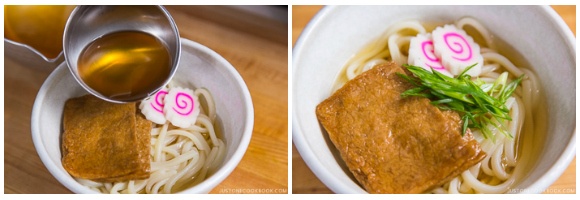
To Store
Nutrition
Editor’s Note: The post was originally published on May 25, 2011. Pictures were updated in November 2017. The new video was added in April 2018. The post has been updated in May 2020.
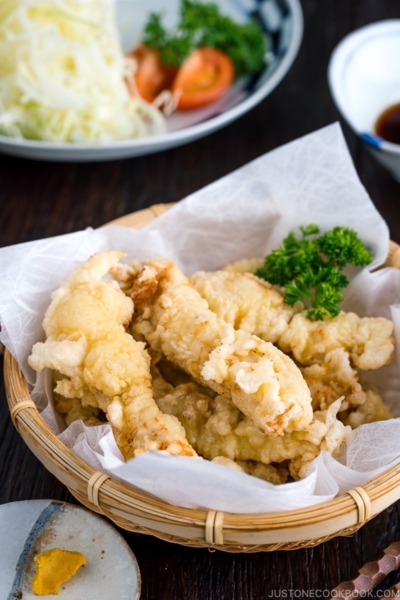

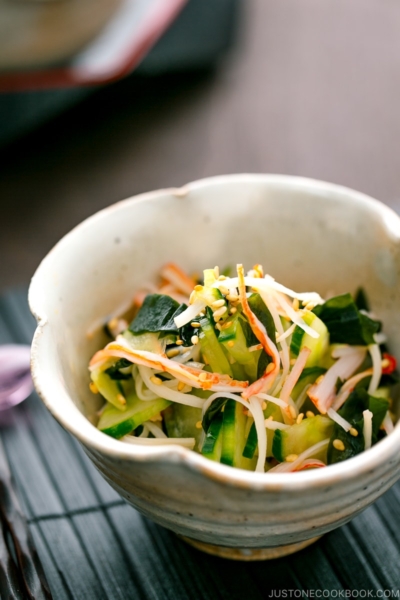
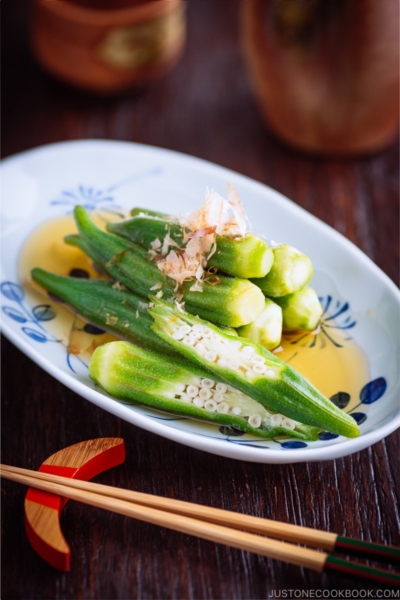
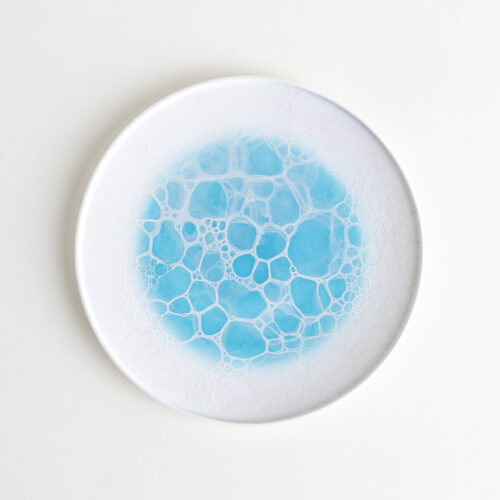
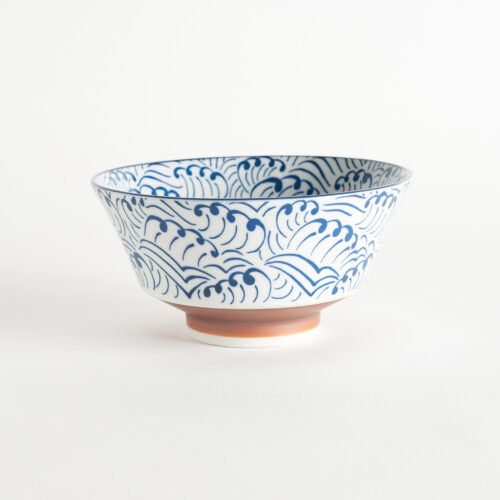
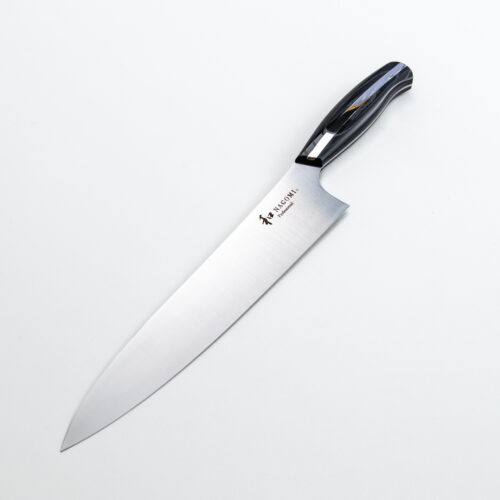
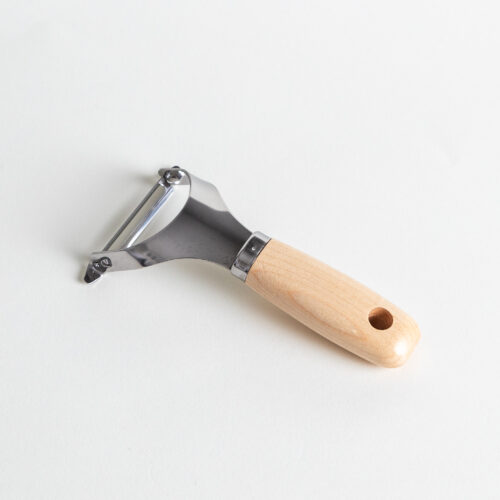

Dear Namisan,
Eating the kitsune udon reminds me of the warm feeling of going to grandmother’s home. I wish I could find the aburaage so I could make it from scratch! Is it possible to make aburaage at home? ありがとうございます!
Hi Janice! Thank you so much for reading Nami’s post and trying her recipe!
Yes, you can make Aburaage at home.
Please check the writing instructions under What is Abraage in this post. We hope you enjoy it!
https://www.justonecookbook.com/aburaage/
I don’t know how many times I’ve made this dish….a lot!!! It’s one of my favorites. Simple broth, simple ingredients but highly satisfying. I spice it up with Nami’s Taberu Rayu and that makes it even better!
Hello, Wee! Aww. Thank you so much for trying Nami’s recipes.
We are so happy to hear you enjoyed it. Happy Cooking!🥰
I didn’t have very high expectations for this, just had a can of inari pouches that needed to get used. No one in my household is usually a fan of broth heavy noodle dishes but everyone slurped this one down and decided we should make it again sometime.
Unfortunately I didn’t have kombu on hand so instead used Hondashi but it still came out fantastic.
Will make again!
Hi Wolfy! We are glad to hear everyone enjoyed Kitsune Udon!
Thank you so much for trying Nami’s recipe and for your kind feedback. Happy Cooking!
Such an simple, yet comforting dish. What I appreciate most is that the recipe provides shortcuts and alternatives if you don’t have the time or ideal ingredients. I didn’t have either to make a proper dashi broth, but I was happy to see that the proportions for dashi powder were included. But I will definitely be remaking this recipe when I have more time and the proper ingredients!
Hi Monica! We are so happy to hear that you enjoyed the recipe and everything else we shared with you.
Thank you so much for trying Nami’s recipe and sharing the photo of your Kitsune Udon! It looks so delicious!
Happy Cooking!
It has an incredibly simple taste, yet manages to keep every bite interesting! I had a great time making this dish, didn’t have the right type of fish cake but I think it still tasted just fine
Hi Atom! Thank you so much for trying Nami’s recipe and sharing your Kitsune Udon photo with us!
It looks so delicious! 🤩
Last night my husband and I enjoyed some homemade Kitsune udon! I didn’t know that the fried tofu was supposed to be simmered in a flavorful, sweetened dashi broth! It was a real game changer and well worth the effort. We loved how much depth of flavor the tofu added.
Thank you so much for making Japanese cooking accessible to so many!
Hi Maria! Thank you so much for trying Nami’s recipe and for sharing your Kitsune Udon photo!
It looks so delicious! 🤩 We are very happy to hear that homemade Inari-Age was worth the effort. ❤️
https://www.justonecookbook.com/inari-age
This recipe will always have a special place in my heart. It’s one of my favorite ways to use Inari. Usually I make this when I have leftovers from making inarizushi, but sometimes I make inari just for this dish.
I’ve satisfied even the pickiest of eater with this dish. It’s a simple beauty.
Hi John! Aww. 🥰 We are so happy to hear this dish is your favorite way to use Inari.
Thank you for trying Nami’s recipe and for your kind words.💞
Tried this last night as we are all sick. So good and yummy! Thanks for sharing such simple yet comfort food.
Hi Nicolle! We are glad to hear Nami’s recipe gave you and your family comfort. We hope you get well soon.💞
Thank you for trying Nami’s recipe.
I made this wonderful recipe for the first time at home while being sick with COVID. I do not like chicken noodle soup (classic sick soup of the US) and remembered an episode of Kiyo in Kyoto where the Mother of the machiya house got sick and was made kitsune udon to help feel better. Soooo I made it myself and wow! It is such a comforting dish and even though I am not feeling the best, I still was able to make this recipe largely from scratch. Way better than chicken noodle soup in my opinion. Thank you for this wonderful recipe, you made a sick person feel better with it 🥰
Hi Caitlin, We hope you are feeling better now.💝
Thank you very much for trying Nami’s recipe and for your kind feedback. We are glad to hear you enjoyed Nami’s Kitsune Udon recipe!
hi, i dont have mirin or soy sauce, do you think substituting these plus the sugar with teriyaki sauce would work? or would the flavour be super different?
Hi Giò, Thank you for trying Nami’s recipe!
We have never tried it before, and we are unsure how the outcome will be. The balance of sweetness is different depending on the teriyaki sauce you use. So we recommend using mirin and soy sauce instead.
I really like this recipe and have made it several times but today I mistakenly followed your link to make homemade awase dashi only to discover that the proportions are different (1 cup of bonito flakes for 4 cups of water) compared with the broth for this kitsune udon (1.5 cups of bonito flakes for 2.5 cups of water). Now I worry my broth will be too diluted…
Hi Grace! Thank you very much for trying Nami’s recipe.
We are sorry to hear you mistakenly made the weak dashi for the dish.😔 Some recipes like this require more flavor and Dashi taste, and we recommend using the dashi recipe below the ingredient list for this dish, as Nami noted in the recipe.
You can make your dashi robust flavor by adding more Katsuobushi and straining the dashi again.
We hope this helps!
Delicious fall lunch! Our local Japanese grocery store (northern CA) had fresh udon noodles! Absolutely divine! Thank you! We added sauteed tatsoi for something green- not traditional but really yummy!
Hi Kay! Thank you very much for trying Nami’s recipe and sharing your cooking experience with us!
We are so happy to hear you enjoyed Kitsune Udon with fresh noodles! Awesome!
Thank you Namiko for the recipe 🙂 your recipes never fail me. I can’t wait to try this udon. I would like to make the broth from scratch. May I know how long can I store the udon broth in my chiller? Would like to cook more and in advance due to my busy schedule.
I love your cold soba! It’s a keeper in my recipe folder!
Hi Astina! We are so happy to hear Nami’s recipes never fail you.🙂 Thank you very much for trying Nami’s recipes and for your kind feedback!
You can store the homemade Udon broth in a bottle or mason jar and the refrigerator for 3-5 days or in the freezer for two weeks.
We hope this helps you plan for your busy schedule.
Oh Naomi, I am making this udon again! And just realised that you had replied me. Thank you so much for your reply. Totally love all your recipes.
My pleasure!🙂 Happy Cooking!